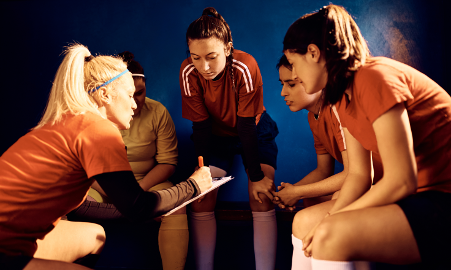Why Sport Might Be the Secret to Making Maths Fun

(Even for That One Student Who Always Says “I’ll Never Use This in Real Life”)
Let’s face it: not every student springs out of bed in the morning thinking, “Can’t wait to tackle some number patterns today!” But say the word sport — whether it’s footy, cricket, netball, soccer, NRL, AFLW or Matildas glory — and suddenly, eyes light up, energy lifts, and half the class wants to talk about last night’s game-winning goal or weekend stats.
Here’s the thing: sport and maths are a perfect team. One brings energy and excitement, the other brings structure and meaning. Together? They make a subject that’s engaging, relevant, and full of real-world application. So if you're looking to help students see the magic in maths — and maybe even have fun doing it — here are seven ways sport can help.
1. Sport Brings Numbers to Life
Instead of adding apples in a basket (which no one actually does outside of a fruit shop), students can add goals, points, tries or wickets. They can tally team scores, calculate margins, or keep count of laps run in PE. Numbers suddenly have a purpose — and that purpose might involve beating Year 6B in lunchtime soccer.
2. It’s a Great Way to Teach Measurement
From measuring the length of a long jump to comparing sprint times, sport gives students a hands-on understanding of metres, seconds, and speeds. You can explore perimeter by marking out an AFL field, compare shot put distances in centimetres and metres, or even work out average speeds in a cross-country race (with a well-earned water break after).
3. It Makes Data and Statistics Mean Something
Sport is packed with data — player stats, team rankings, win/loss ratios, and more. Students can collect and graph their own class athletics results, compare Olympic medal tallies, or work out averages from their basketball free-throws. Suddenly, that “mean, median and mode” lesson becomes about them — and who’s got the best netball shooting average.
4. It’s an Introduction to Probability That Actually Feels Fun
What are the chances of winning the toss? How likely is it that the Matildas will win if they’re 2–0 up at half-time? Why do cricket teams bat or bowl based on a coin flip? Students can explore probability through real sporting examples — and maybe even design their own spinner or dice game inspired by the NRL.
5. Geometry is Everywhere on the Field
Think of all the shapes in a soccer field: rectangles, circles, arcs. Geometry becomes far more interesting when you’re using it to work out where to stand for a corner kick or how far the penalty spot is from the goal line. You can measure angles in basketball rebounds or study symmetry in gymnastics and diving routines.
6. It Encourages Teamwork and Active Learning
Maths doesn’t have to mean sitting still. Sport-themed maths can be done on the move — in teams, outdoors, with timers, races, and real-time results. Students learn by doing, cheering each other on while quietly (or loudly) using mental maths without even realising it. It’s a win-win.
7. It Builds Confidence — Especially for Reluctant Learners
For students who struggle with traditional maths, sport gives them a way in. They may not care much about fractions… until they realise they can calculate how many goals they’ve scored out of their total shots. That’s a fraction. That’s also a conversion rate. And that’s maths they now care about — because it’s theirs.
In Conclusion: Maths Isn’t Just on Paper — It’s on the Field, Pitch, Court and Park
Sport gives maths meaning. It makes numbers exciting, measurement real, and data personal. And for Aussie students who love their sport (which is, let’s be honest, most of them), it turns maths from something they have to do into something they want to do.
So next time your class groans at the start of a maths lesson, try throwing a ball into the mix. You might just find that the path to better numeracy starts on the oval, with a stopwatch in one hand and a clipboard in the other. And who knows — maybe the next Olympic gold medallist will be the one who also figured out the best way to calculate her split times in Year 5 maths.
This blog post was created by Felstead Education. We specialise in helping students see the fun, exciting and engaging aspects of mathematics. We offer a range of workshops and incursion that can help you create a truly memorable and unique maths experience for your students such as The Maths Show, The Amazing Maths Race, The Maths Escape Room and The Maths and Sport Show.
To find out how we can add some extra fun to maths at your school, visit us at www.felstead.com.au or email: info@felstead.com.au